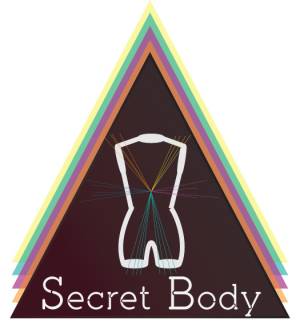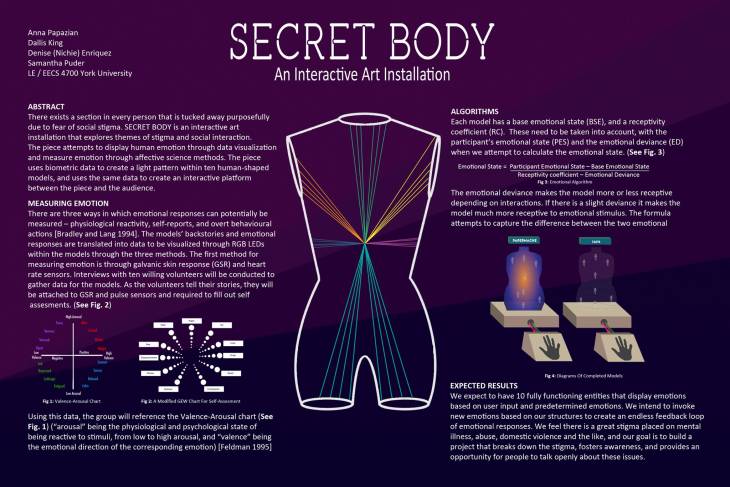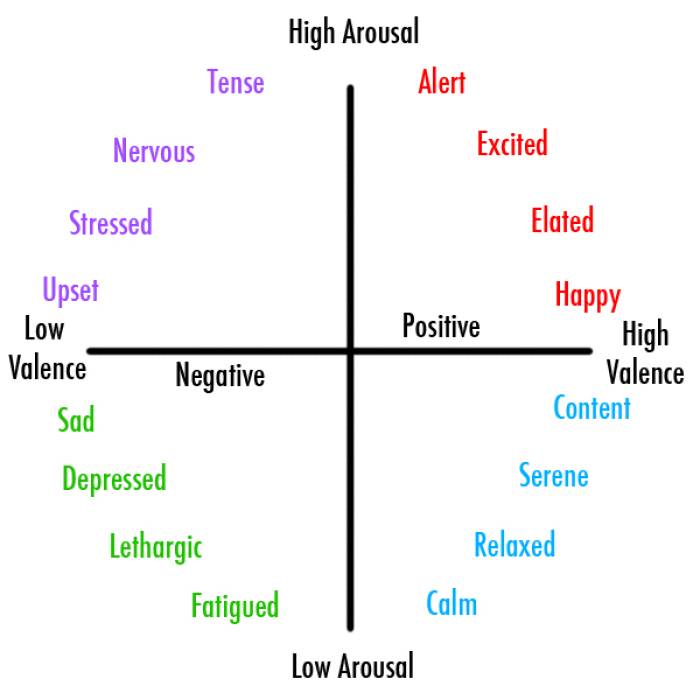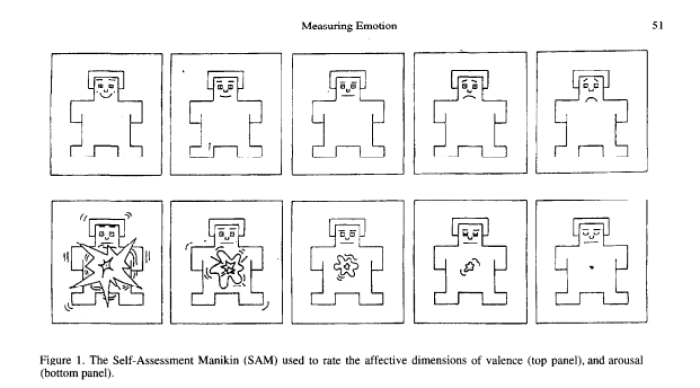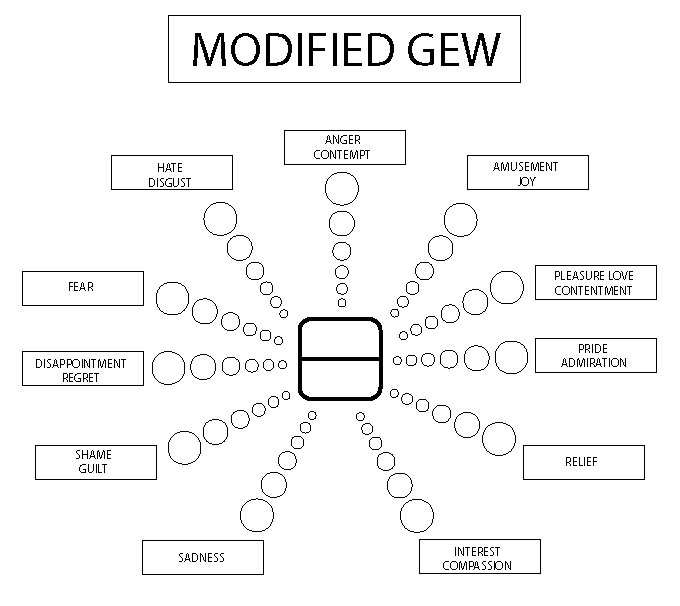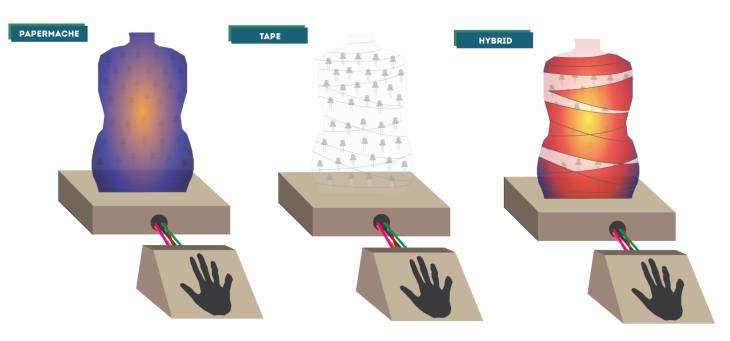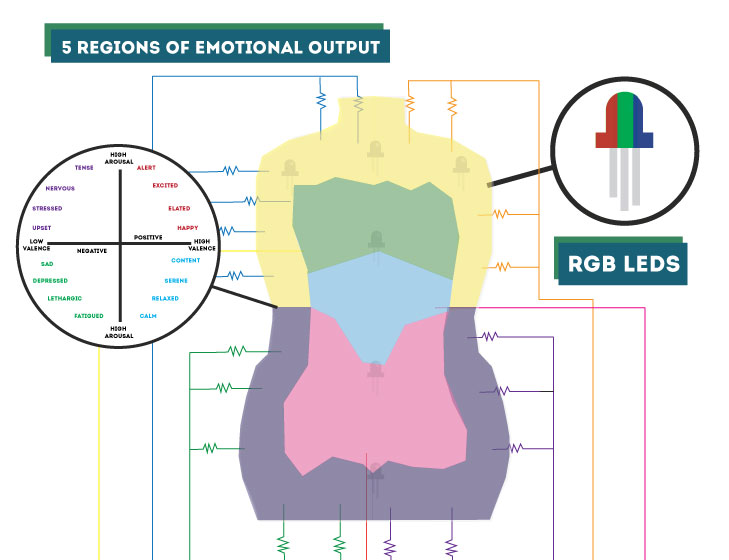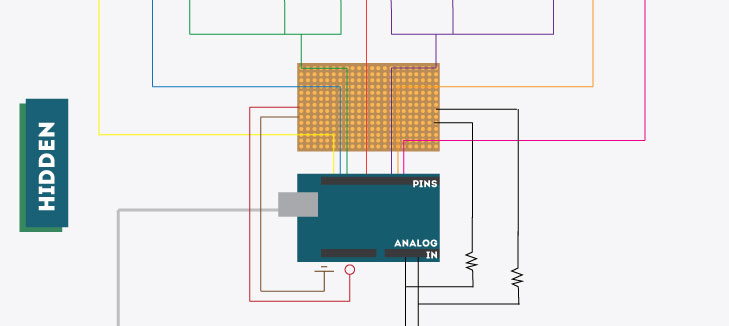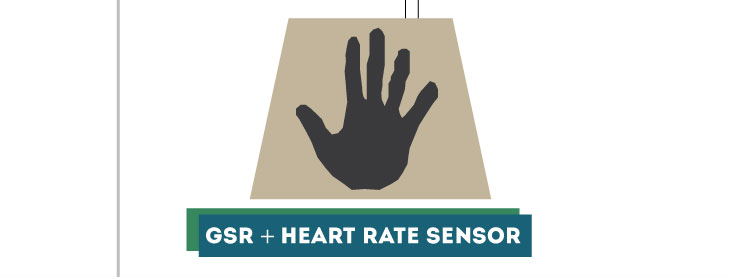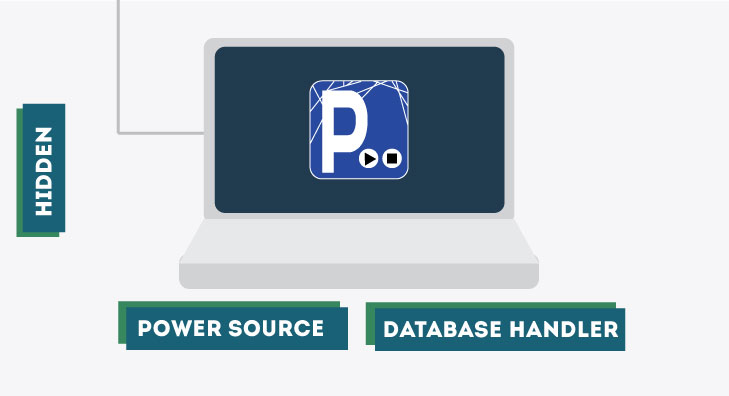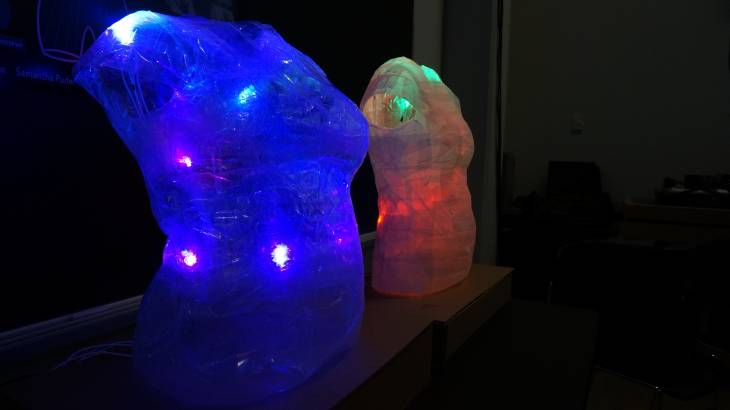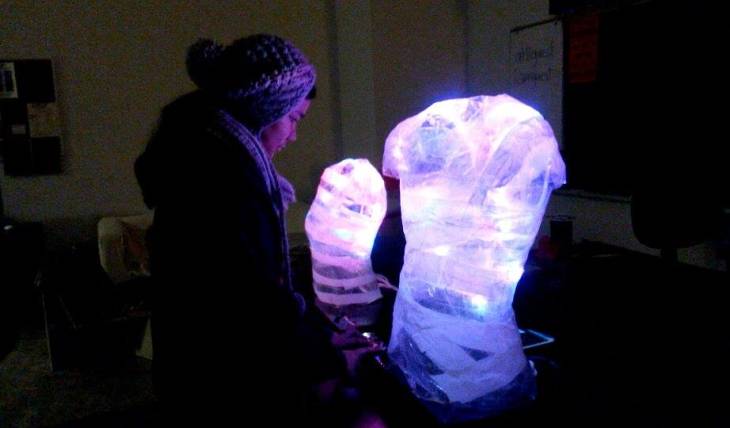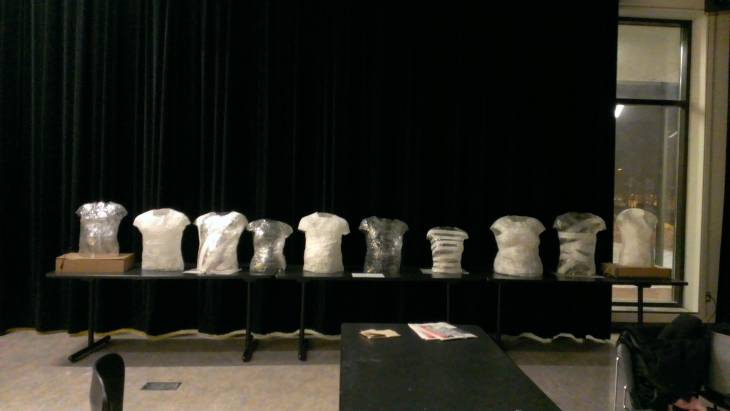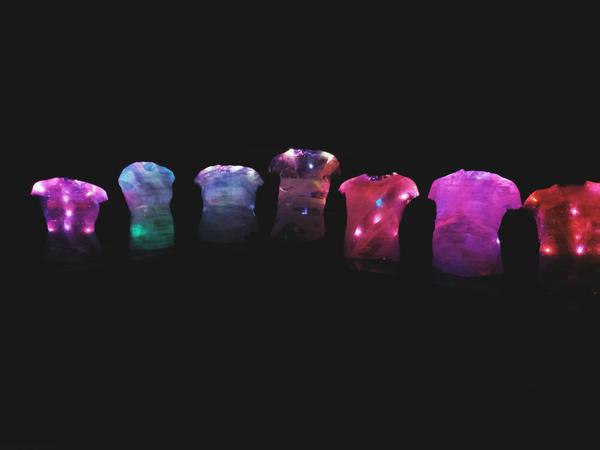Table of Contents
SECRET BODY
Prof. Ebrahim Ghafar-Zadeh & Prof. Mark-David Hosale, Course Directors
POSTER
CREATIVE TEAM
 Enriquez, Denise (Nichie)
Enriquez, Denise (Nichie)
Nichie Enriquez is a fourth-year Digital Media student. She likes Processing, Max/MSP, and data visualization.
Role: Creation and management of the database for interaction. Data collection.
 King, Dallis
King, Dallis
A 4th year Digital Media student studying at York University. Past work has included working mainly with robotics and data visualization.
Role: Creation of an interface for real-time GSR, pulse, and temperature measurement. Data collection.
 Papazian, Anna
Papazian, Anna
Anna Papazian is a fourth year Digital Media major, who enjoys reading, movies and music while incorporating these passions into her works. Her past works include experimenting with sounds and visuals as well as robotics.
Role: Programming the micro controllers to communicate among the models. Data collection.
 Puder, Samantha
Puder, Samantha
A 4th year Digital Media student at York university. Her past work includes emotions and robotics.
Role: Fabrication of physical models, inclusive of circuitry. Data collection.
ABSTRACT
There exists a section in every person that is tucked away purposefully due to fear of social stigma. SECRET BODY is an interactive art installation that explores themes of stigma and social interaction. The piece attempts to display human emotion through data visualization and measure emotion through affective science methods. The piece uses bioinformatic data to create a light pattern within ten human-shaped models, and uses the same data to create an interactive platform between the piece and the audience.
MOTIVATION
With SECRET BODY, we are splitting our focus between engineering and cultural aspects. We're attempting to create an algorithm to interpret and effectively display the data from our initial participants. SECRET BODY aims to bring to light the stories of people, the kind of stories that are often turned into statistics and numerical data. By doing that, humans internalize the stigma of mental illness, which in turn develops the stigma in the external response.1) We seek to humanize the data, and make it subject to empathy and recognition. Our hope is that by abstracting emotions in a visual form we can also abstract out the stigma, challenging peoples cognitive biases and encouraging them to develop a more empathetic approach.
RESEARCH
The measurement of human emotion is extremely complex. We are attempting to break it down into measurable steps that we can combine to form one cohesive example of emotion to project into our sculptures.
Emotion is most commonly and simply broken down into arousal/valence charts. This chart breaks down human emotion into four sectors, dividing them by a persons arousal and valence scores - with valence referring to the basic emotional state of a person (positive or negative) and arousal referring to the urgency of that basic state
An example arousal/valence chart with example emotions filled in to each sector.
A self assessment chart taken from an experiment to measure emotion. One can see the difference between arousal and valence.2)
Arousal can be measured exclusively with GSR. A high GSR (>25 KOHMS) indicates low arousal while a low GSR (<25 KOHMS) indicates high arousal.
Valence is much more complicated. It can be determined from a combination of heart rate, temperature, self assessment and observation of the subject.
During the interview process we ask the interviewee to pin-point the emotions they were feeling while sharing their story with us. The chart above is a modified Geneva Emotion Wheel, for them to complete the self assessment of their emotions correlating to our assessment of their emotion.
PROJECT OVERVIEW
Overall Image
Project Schematics
METHODOLOGY AND PROGRESS
We want to have 10 models; 5 females and 5 males, each with their own personal backstories. We will express the emotions through physical, visual, and audio components significant to the narrative of our concept, underneath a clear plastic casing. Our fabrication will include LEDs, speakers, and design crafts. To interact with the model, the user will place their hand on a panel relative to the models. These panels will consist of multiple sensors (GSR and pulse) that input information for which the piece will react to. Using an algorithm, the input gathered from the user’s emotional state will affect the models base state. This is will be the metaphor for real-life human interaction, in which the emotional state of one person affects those around them, either directly or indirectly but not necessarily as a lasting effect. We will have a database for every person who interacts with our piece. It will have a high turnover rate; In the absence of interaction for certain period of time, the model return to its base emotional state, or possibly even worsen in nature. Gaps in interaction also affects the database, and each model will have different characteristics of response based on its backstory.
To determine the base emotional state for each of the ten models, we will measure the GSR, and pulse of chosen participants who have struggled with opprobrium for a verbal, in-person interview. Using these measurements and the Valence-Arousal chart we can present the information as data which we will use in our piece to garner an emotional response. Our implementation of our concepts adds emphasis to the willingness to discover, and be educated in the reality of unspeakable stories, but have a certain degree of power to be an establishing point to their evolution as well.
PROJECT ITERATIONS
Proof of Concept
SECRET BODY v 0.1 Initial testing phase, to see if the forms would hold and diffuse light in the ideal pattern.
Torso Testing
These were showcased for the midterm presentation. Full scale testing of a temperature mapping, but not interactive models.
Testing Interaction
This is the first iteration of interaction. Models have been mapped to their respective interviews and react to a users interaction.
Final Tweaking
These were showcased for the final presentation, all models are completely functional. We will continue working on the project to tweak the interaction interface given from user feedback.
PREVIOUS SHOWCASING
Outside of the Capstone exhibitions our project has also been shown at the following:
CUSEC 2015
SECRET BODY presented at the Canadian University Software Engineering Conference for an event called Demo Camp. Received the prize for the most unique/creative project.
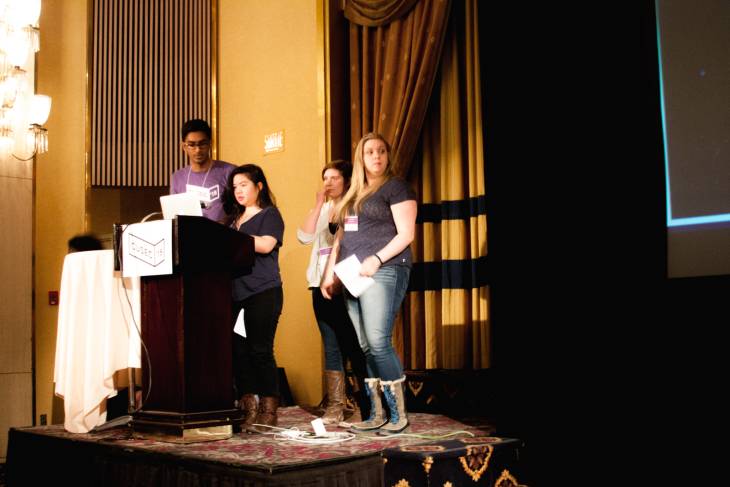
York University 3rd Annual Undergraduate Research Fair
SECRET BODY presented at the York University Undergraduate research fair. Received the Peoples Choice Award.
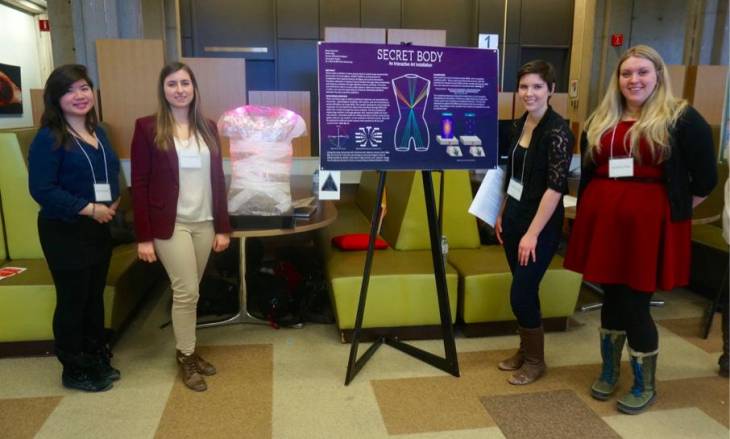 Undergraduate Research Fair
Undergraduate Research Fair
Create.inTO
SECRET BODY was given the opportunity to present for a Digital Media student showcase with select other projects.
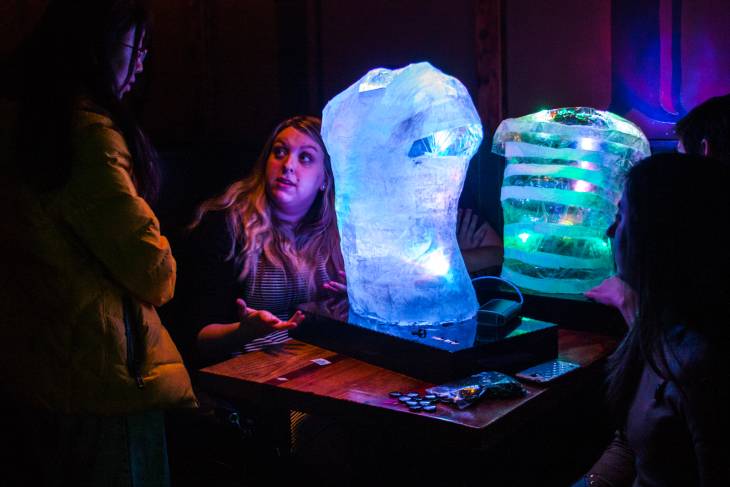 Create.inTO v21.0
Create.inTO v21.0

